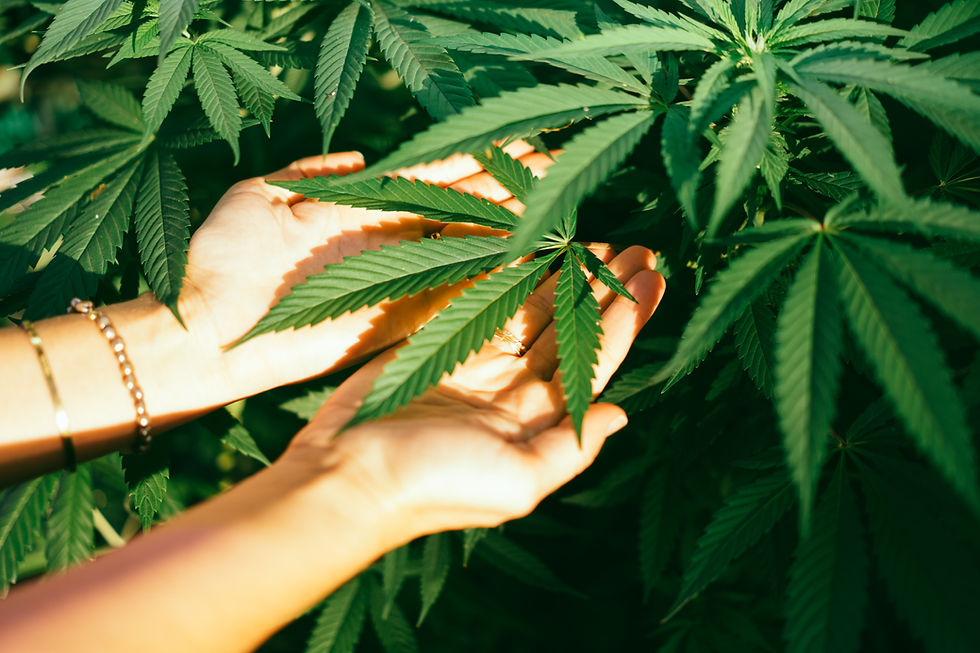
Our skin is the body’s largest organ, and it happens to be covered in cannabinoid receptors! Cutaneous cannabinoid signalling is deeply involved in the maintenance of skin homeostasis, barrier formation and regeneration. The presence of CB1 and CB2 receptors in the skin is what allows the healing properties of the cannabis plant to be delivered locally for symptomatic relief, but without any of the intoxicating side effects one may experience from other methods of delivery.
Because the components of the cannabis plant are fat-soluble, topicals generally only penetrate a few layers of skin, absorb into the dermis and interact with the local receptors at that site. As the activated cannabinoids do not breach the blood barrier, nor permeate the body enough for significant systemic absorption, this makes them a great choice for many people.
Topical treatments can offer targeted, localised relief from:
aches and pains
inflammation
muscle spasms
arthritis
athletic recovery
muscle tension or stiffness
nerve pain
headaches and migraines
skin conditions – eczema, psoriasis etc.
menstrual cramps

How to use topical treatments
Body Oils
Massage a small amount into the affected area, as required throughout the day. To enhance absorption, you can warm the area first (unless inflammation is present), or apply them after a warm shower or bath when your pores are open.
Bath
Adding a capful of Topical Oil to a warm bath offers a self-care experience alongside full-body therapeutic effects. Combine with essential oils such as chamomile or lavender to enhance the relaxation experience, or Epsom Salts for muscles and detoxification.
Foot/Hand Bath
In a bowl of warm water, add 2 capfuls of your chosen Topical Oil. Soak. Combine with essential oils such as Peppermint and Eucalyptus to enhance the effectiveness.
Poultice
Pour 1- 2 teaspoons of Castor Oil onto a dressing pad, or organic cotton cloth, then add enough Topical Oil to saturate the dressing. Apply to the affected area, cover with plastic wrap (to protect clothing), and if necessary bandage onto the area. Leave in place for at least 1 hour, or overnight if necessary. Great for relieving pain and inflammation, or on wounds such as cuts. This can be an effective way to draw out a splinter.
Creams, Balms and Salves
Apply a light layer and gently massage into the affected area 2-3 times per day. Our formulas have a green tinge due to the whole-plant herbal extracts. This should disappear as the cream is absorbed into the skin, however, if you do have any concerns about using it on your face during the day, be sure to apply it before bed to deeply absorb the skin-loving benefits while you sleep.
How long do topicals take to work?
Topicals have an onset time of between 10 - 30 minutes, and you should be able to feel the effects for 2-3 hours afterwards. Consistent use may also have a cumulative effect.
So, how do you know which treatment is right for you?
There is a huge range of different topical products, so there’s something for everyone, regardless of whether you’re using an infused product to help with pain management, skin care, or self-care.

Bright Blessings, from your Ubuntu Community
Sources
Mahmoudinoodezh H, Telukutla SR, Bhangu SK, Bachari A, Cavalieri F, Mantri N. The Transdermal Delivery of Therapeutic Cannabinoids. Pharmaceutics. 2022 Feb 18;14(2):438. doi: 10.3390/pharmaceutics14020438. PMID: 35214170; PMCID: PMC8876728.
Narayanan, Varsha & Gandhi, Rajesh & Suryavanshi, Ashok & Nadkarni, Biren & Rungta, Varun. (2022). Topical cannabinoids for the management of musculoskeletal pain: Understanding and review. 83-88.
Río CD, Millán E, García V, Appendino G, DeMesa J, Muñoz E. The endocannabinoid system of the skin. A potential approach for the treatment of skin disorders. Biochem Pharmacol. 2018 Nov;157:122-133. doi: 10.1016/j.bcp.2018.08.022. Epub 2018 Aug 20. PMID: 30138623.
Tóth KF, Ádám D, Bíró T, Oláh A. Cannabinoid Signaling in the Skin: Therapeutic Potential of the "C(ut)annabinoid" System. Molecules. 2019 Mar 6;24(5):918. doi: 10.3390/molecules24050918. PMID: 30845666; PMCID: PMC6429381.

Comments